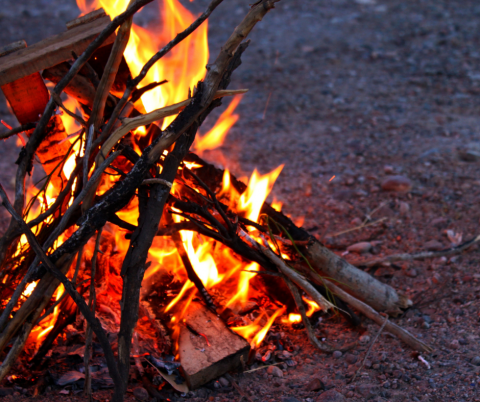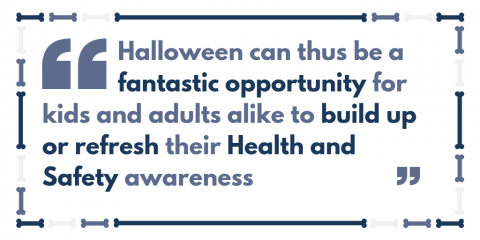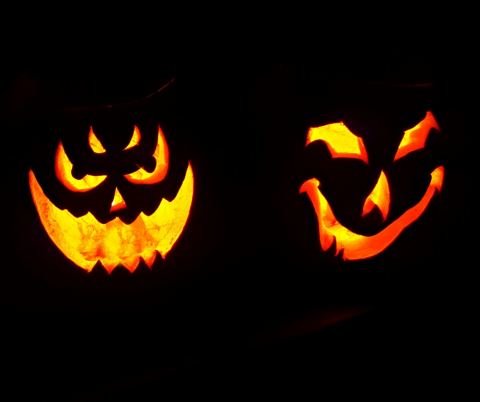WA Management provides professional, adaptable and appropriate solutions for your Health and Safety needs. Each week, our research blog takes a detailed look at particularly topical areas of the sector, or risks that are repeatedly overlooked. This week we cast our scrutinising eye on Halloween, and whether any Health and Safety lessons can be learned on the scariest night of the year.
Halloween at a glance
Each year on 31 October, as the frosty tendrils and darkening nights of winter close in around us, the excitement of Halloween begins to boil over. But what comes to mind: Ghouls and ghosts gallivanting garishly through the graveyards? Or perhaps young children excitedly knocking door-to-door in haphazardly homemade costumes? Irrespective of the memories it conjures; Halloween can provide an interesting case study for Health and Safety in our daily lives.
 The earliest records of Halloween can be traced back to the Celtic festival of Samhain (pronounced rather ridiculously as Sow-in) more than 2000 years ago. Celts in England, Ireland, Wales and Northern France all used the turn of November to ward off unearthly, ghoulish creatures and to protect the fruitful labours of the harvest. Bonfires would be lit and pagan dances danced to commemorate the dead. However, the festival gained its more modern name in the eighth century, when Pope Gregory III declared the night of 31 October to be All Saints, or rather All Hallows, eve. Hallows’Eve then made the short jump to the Halloween we know and love today.
The earliest records of Halloween can be traced back to the Celtic festival of Samhain (pronounced rather ridiculously as Sow-in) more than 2000 years ago. Celts in England, Ireland, Wales and Northern France all used the turn of November to ward off unearthly, ghoulish creatures and to protect the fruitful labours of the harvest. Bonfires would be lit and pagan dances danced to commemorate the dead. However, the festival gained its more modern name in the eighth century, when Pope Gregory III declared the night of 31 October to be All Saints, or rather All Hallows, eve. Hallows’Eve then made the short jump to the Halloween we know and love today.
Harmless fun or Health and Safety nightmare?
But enough of the origins (hands up if you can tell that the intern studied history), how does Halloween relate in any way to Health and Safety? Halloween often sees vast arrays of decorations and costumes plastered across our houses and gardens – could these potentially compromise Health and Safety?
Indeed, several newspapers broke the story in 2014 that the 8-year-old daughter of presenter and broadcaster Claudia Winkleman had been hospitalised after sustaining severe injuries on Halloween. The costume she had been wearing was exposed to the open flame of a Jack O’ Lantern, and immediately caught fire. This high-profile case caused government regulations on the fire retardancy of Halloween items to be tightened, and exemplifies more broadly how Health and Safety must always be considered.
 In response to the growing concerns of many, health regulators in the US have gone so far as to promote guidelines for a safe Halloween. The tips include; ensuring children wear brightly coloured and easily identifiable costumes, as well providing supervision for pumpkin carving.
In response to the growing concerns of many, health regulators in the US have gone so far as to promote guidelines for a safe Halloween. The tips include; ensuring children wear brightly coloured and easily identifiable costumes, as well providing supervision for pumpkin carving.
Conclusions, and how WA Management can help
 Despite the message of the paragraphs above, the aim of this blog is not to dissuade people from enjoying the fantastic holiday that is Halloween. Rather, we wish to promote ways that ensure that the scariest part of the evening is the Trick or Treating, and not the unwanted hospital visits. Halloween can thus be a fantastic opportunity for kids and adults alike to build up or refresh their Health and Safety awareness.
Despite the message of the paragraphs above, the aim of this blog is not to dissuade people from enjoying the fantastic holiday that is Halloween. Rather, we wish to promote ways that ensure that the scariest part of the evening is the Trick or Treating, and not the unwanted hospital visits. Halloween can thus be a fantastic opportunity for kids and adults alike to build up or refresh their Health and Safety awareness.
If you have any concerns about the issues raised in this blog, make sure you contact WA Management HERE today. Also, follow our social media pages for great daily updates and tips. Make sure you have a spooky (but safe) Halloween on the 31st.
Article on Claudia Winkleman HERE
CDC guidelines on Halloween safety HERE
